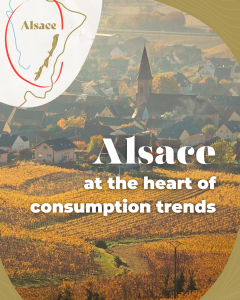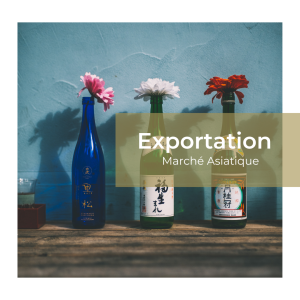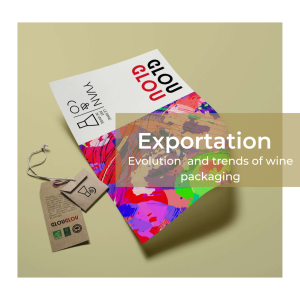
Alsace, at the heart of consumption trends
Alsace stretches out in a mosaic of terroirs, surrounded by the slopes of the Vosges and the plains of Burgundy. Today, it stands out thanks
The Chablis region is the northernmost wine district of the Burgundy region in France. The cool climate of this region produces wines with more acidity and flavors less fruity than Chardonnay wines grown in warmer climates. The Chablis Appellation d’Origine Contrôlée is required to use Chardonnay grapes solely.
The grapevines around the town of Chablis make a dry white wine renowned for the purity of its aroma and taste. In comparison with the white wines from the rest of Burgundy, Chablis wine has typically much less influence of oak. Most regular Chablis are unoaked, and vinified in stainless steel tanks.
Chablis wines are dry white wines which are characterized by their purity, crispness, sophistication and minerality. The Chardonnay varietal gives results in Chablis unlike anywhere else. It draws its personality and character from a subsoil that is 150 million years old, and ripens in ideal conditions, in a semi-continental climate, which allow it to attain a good balance between sugar levels and acidity.
Pierrick Laroche grew up in Maligny, the northernmost village in the Chablis appellation. His father farmed 200 hectares of cereals in the outlying hills, and always maintained a few hectares of vines to sell the production to the reigning co-op, La Chablisienne (an entity that accounts for roughly one quarter of Chablis production).
Beginning in 1985, his father applied to the INAO for rights to increase his plantings by about an acre and a half, and did so every year thereafter.
In 2006, Pierrick got his degree in enology at Beaune, did an internship at Villa Maria in New Zealand, and returned home to start life as a grower
A few years later, the domain expanded : construction of the cellar and extensions with a covered outside building to receive the grape harvest, installation of performing machinery.
In 2008, the two brothers decided to use indigenous yeasts to preserve the naturalness of the wines.
Pierrick Laroche quit his father’s practice of using herbicides and reduced applications of fungicide to contact and organic products, began plowing his vine rows, and worked on a design for a simple gravity-operated winery.
He made his first commercial vintage in 2010—just 2,300 bottles, but they garnered him top billing of three stars in France’s wine magazine the Guide Hachette and many great awards ever since.
England’s MW Rosemary George stumbled upon him around the same time in 2012 at Chablis annual post-harvest fair. She wrote: “Pierrick Laroche…has taken his family’s vines out of the cooperative and made his first vintage in 2010. And very good it is, too, with some firm, fresh minerality.”

Alsace stretches out in a mosaic of terroirs, surrounded by the slopes of the Vosges and the plains of Burgundy. Today, it stands out thanks

Exporting French wines to the Asian market offers numerous opportunities for foreign beverage distributors. Asia, as a rapidly growing economic region, presents a growing demand for luxury products, and French wines are no exception.

The world of wine is constantly evolving, and bottle packaging plays an essential role in this transformation. As a company passionate about promoting French wines internationally, you are certainly aware of the importance of design and packaging in attracting foreign consumers and retaining your clientele.
Keep up to date with the latest news from La Confrérie des Domaines and our wineries.